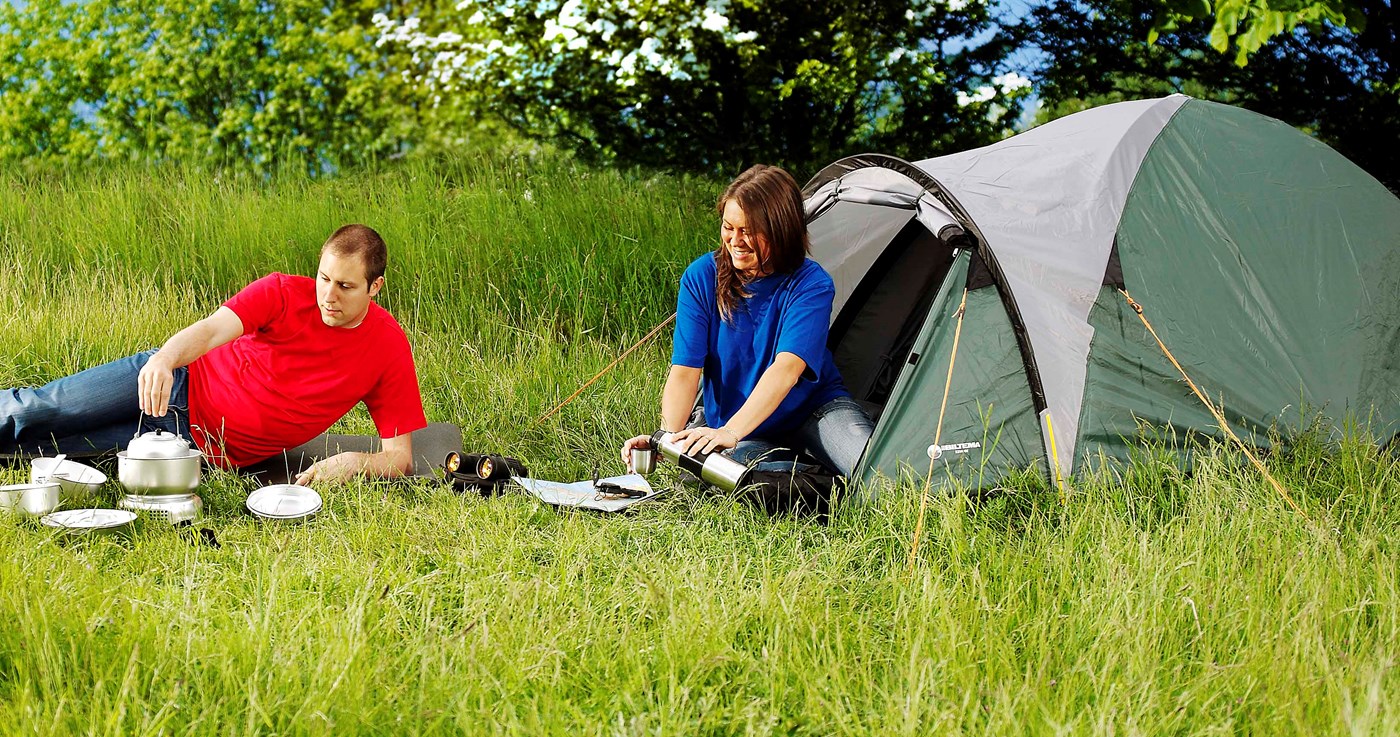Clean Your Camping Gear to Make it Last Longer
No matter if you’re an avid holiday camper or just someone who camps when the urge strikes, it’s always important to clean your camping gear when you get home. Our first – and perhaps most important – tip is to clean your equipment immediately, and don’t leave it packed or stored when dirty. It is also important that you store outdoor equipment properly. But don’t worry, we’ll guide you through it.
Tips for storing and cleaning camping equipment
- Store your equipment in a dry, cool, and well-ventilated area to prevent mould.
- The equipment must always be completely dry before being stored.
- When cleaning your gear, always follow the cleaning instructions provided.
- If – and we really mean if – you must wash the equipment in a washing machine, you should never use fabric softener, since this can ruin the function of the fabric.
Cleaning while camping
It’s important to clean your camping gear when you get home, but it’s also important that you regularly clean some of your gear even while camping. For effective, easy cleaning at the campsite, you should pack the following cleaning items:
Cleaning after camping
So, once you get home from your camping trip, what must be cleaned – and when and how?

How to clean your tent
The tent is designed to protect you from the elements while camping. It is therefore also greatly subjected to wear, mould and possible damage to the zip or tears in the tent fabric. The recommendation is that you clean your tent properly at least once every season. Of course, you need to wash it more often if it gets exposed to a lot of dirt and is used frequently.
And don’t forget that you will also find tent pegs and repair kits in our tent range here.
Step 1. Unpacking and checking
When you unpack your tent after the camping trip, it’s important that you carefully check the tent. Open all zips, turn the tent inside out and shake it thoroughly to get rid of leaves, grass, and other debris.
Step 2. Scrub and wipe down
On dirty areas of the tent, use a mild detergent and a soft sponge to clean. Make sure to not scrub too hard or use a sponge that is too hard to avoid scratching the tent fabric.
Step 3. Clean and squeeze
Fill a large tub, or bathtub, with lukewarm water and mild detergent. Leave your tent inside out, and dip it into the water. Squeeze and work the tent while submerged, so that all parts of the tent are cleaned. You can let the tent submerged for up to 10-20 minutes and continue cleaning the tent.
Be sure to read the tent’s instructions to determine how long it can withstand being submerged. You should not exceed those recommendations.
Step 4. Rinse off
Lift the tent out of the water. Gently squeeze the water out of the tent, without wringing it. If you wring too hard, the tent’s fabric can be damaged. Empty the tub or bathtub and fill with fresh, clean water. Submerge the tent in the water again and squeeze out the residual detergent. It’s up to you how many times you repeat Step 4, depending on how dirty the tent was and its size.
Step 5. Dry
When you have removed all the soap residue and dirt, it is time to dry the tent. You can do this either by hanging it up or by erecting it and letting it dry while assembled.
Step 6. Finishing touches
You are now done with the most time-consuming cleaning. But don’t forget to the tent pegs and zips. These may also need to be cleaned and wiped down. A good tip is to use a toothbrush for cleaning the zips to easily get rid of stuck dirt. It is also now time to repair any damage and scratches you found when unpacking the tent. Some people prefer mending these themselves using a needle and thread, while others hand the tent in to a professional. It’s up to you.
How to wash your sleeping bag
It is usually sufficient to air out your sleeping bag and clean any stains, because you should not wash it too often. Most sleeping bags can be washed in a washing machine at 40 °C. But always be sure to read the washing instructions for your specific sleeping bag. And always let it dry thoroughly before storing it.
Storing the sleeping bag
When the sleeping bag is to be stored for a long time, do not store it in its small bag. The compression can wear down the sleeping bag. It is better to hang it up or store it in a more spacious bag.
Clean and maintain your camping stove
Your camping stove will definitely work hard during a camping trip. The best thing, for both you and your camping stove, is to clean it every time it is used and never leave food residue in the pots and pans. Food residues can corrode, discolour, or damage to the aluminium.
You can easily clean your camping stove and cookware using washing up liquid and a brush or soft sponge. Never wash your aluminium cookware in a dishwasher, since this can damage its surface.

Storing your camping stove
Once you have cleaned your camping stove, it’s time to store it away. It’s a good idea to start from the following points:
- To avoid leakage, the burner should be completely drained of fuel.
- Make sure all parts are completely dry before packing them away.
- Protect the cookware and burner by placing them in separate plastic bags, so that they do not scratch each other.
- Store the fuel bottle upright.
Impregnation is everything
Your tent, your clothes and your backpack and bag wear out after a while when you are out in nature and camping. Most outdoor clothing and tents are designed to withstand the elements and have a waterproof membrane. But even this wears out gradually, and it’s therefore a good idea to regularly, and as needed, impregnate your tent and your clothes. With impregnation, you give the material greater resistance to moisture and damp, which will help them to keep you dry longer.
Once all your camping gear is cleaned and packed, you can start planning for your next camping trip with a good conscience. Because you are surely eager to go out into nature as soon as you get home again! And with well-cleaned equipment, you will be able to enjoy many unforgettable camping holidays.



